Table of Contents
In the realm of innovative agriculture, aeroponic saffron farming represents a fusion of tradition and technology, offering a new horizon for cultivating one of the world’s most cherished spices. This method circumvents the geographic and climatic limitations traditional saffron cultivation faces, allowing for year-round production in controlled environments. By leveraging the principles of aeroponics, growers can achieve more sustainable and efficient saffron production, reducing water usage, minimizing the need for pest control, and potentially increasing yield and quality over traditional soil-based methods.
This article delves into the intricacies of aeroponic saffron farming, covering essential topics from understanding the foundational aeroponics system to the specifics of greenhouse cultivation and organic farming practices tailored for Crocus sativus. Readers will be guided through the setup requirements for an effective aeroponic system, the preparation of saffron corms for cultivation, and the critical stages of planting, maintenance, and monitoring. Additionally, we explore the saffron harvest process, including post-harvest processing and the challenges often encountered in aeroponic saffron cultivation, alongside practical solutions.
Understanding Aeroponics
At its core, aeroponics means “growing in the air.” In an aeroponic system, plants’ roots are freely suspended in an open root-zone environment, receiving optimal amounts of water, nutrients, and air. This method of cultivation eliminates the need for soil or any aggregate media, relying instead on a nutrient-dense fluid sprayed onto the plant roots at predetermined intervals. The roots are kept in a dark container to prevent light from inhibiting growth, ensuring that nutrients are delivered with precision and efficiency. This direct application of nutrients and oxygen to the roots facilitates rapid growth and development, setting aeroponics apart from other cultivation methods.
Key Differences Between Aeroponics and Traditional Farming Methods
Aeroponics distinguishes itself from traditional soil-based and hydroponic cultivation through several key differences. Firstly, it promotes rapid plant growth and higher yields by delivering essential nutrients and oxygen directly to the plant roots in the form of a fine, nutrient-rich mist. This method is more efficient than traditional soil-based farming, where plants must access nutrients through the soil, a process that can be slow and inefficient.
Space efficiency is another advantage of aeroponics. Vertical growing systems allow plants to be grown in stacks or shelves, making efficient use of available space. This is especially beneficial in urban farming settings, where land can be scarce and costly. Additionally, aeroponics offers an unparalleled level of control over the growing environment, allowing for precise adjustments of nutrient delivery, temperature, humidity, and light levels to optimize plant growth.
Environmental benefits further underscore the advantages of aeroponics. By growing in a controlled environment, aeroponics reduces reliance on chemical pesticides and conserves water resources. Many aeroponic growers utilize integrated pest management (IPM) principles as biological control measures, further reducing the need for chemical interventions. The system’s sustainability is enhanced by the possibility of combining it with renewable energy sources, thus reducing carbon emissions.
Lastly, aeroponics facilitates year-round cultivation, free from the constraints of seasons or weather conditions. By maintaining optimal growing conditions inside aeroponic systems, crops can be produced continuously, providing a steady supply of fresh produce regardless of external factors.
Benefits of Growing Saffron in Aeroponics
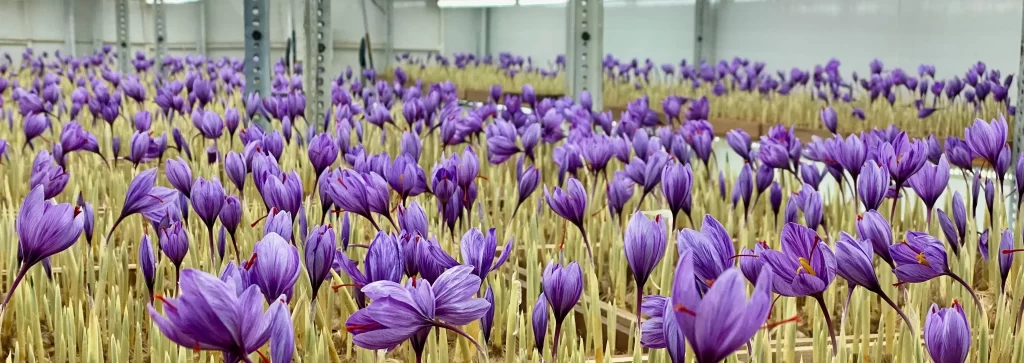
Reduced Water Usage
Aeroponic saffron farming is renowned for its water-saving potential, utilizing up to 90-95% less water compared to traditional soil cultivation methods. By misting the plant roots with a nutrient-rich solution, aeroponic systems ensure efficient water usage and nutrient uptake, making this approach highly suitable for areas facing water scarcity or drought conditions.
Enhanced Crop Yields
The innovative aeroponic system not only conserves water but also significantly boosts crop yields. This method allows for a yield of 500-600 grams of saffron using 100 kg of saffron bulbs. Remarkably, the crop can be cultivated up to four times a year, as opposed to the traditional once-a-year cycle, thus potentially increasing the saffron production volume.
Improved Saffron Quality
One of the standout benefits of aeroponic cultivation is the notable improvement in saffron quality. The controlled environment of aeroponics ensures consistent colour, aroma, and potency in the saffron produced. This premium quality not only satisfies consumer demand but also fetches higher market prices, thereby enhancing profit margins for growers.
Improved Pest and Disease Control
Aeroponic systems offer improved control over pests and diseases, significantly reducing the risk of soil-borne diseases and pests. This cleaner, more sustainable method of saffron production aligns with the increasing demand for organic and eco-friendly agricultural practices, minimizing the need for chemical pesticides and herbicides.
Control Over the Growing Environment
Aeroponics provides unparalleled control over the growing environment, including temperature, humidity, and nutrient delivery. This control allows for year-round production, irrespective of seasonal limitations, and minimizes the plant’s exposure to severe weather, sudden rains, and snowfalls. The ability to maintain optimal growing conditions inside aeroponic systems ensures a steady supply of high-quality saffron.
The Growth Cycle of Saffron in Aeroponics
Germination and Root Development
The growth cycle of saffron (Crocus sativus) in aeroponic systems begins with the dormant phase of the bulb. Once placed in the aeroponic chamber, these bulbs enter the germination phase, characterized by sprout and root formation. The aeroponic environment, where roots are misted with a nutrient-rich solution, provides optimal conditions for this early stage of development. The system setup, including adequate aeration, humidity, and temperature control, plays a crucial role in ensuring the healthy development of saffron roots. Monitoring and adjusting the pH levels of the nutrient solution is also essential during this phase to meet the specific growth requirements of saffron.

Flowering and Stigma Development
Following root development, the Crocus sativus progresses to flowering and leaf production. This stage is critical as it leads to the development of valuable saffron stigmas. In aeroponics, providing the right amount of light is essential since saffron requires full sun for optimal flowering. The controlled environment of aeroponics allows for the maintenance of a Mediterranean climate, which is ideal for saffron, characterized by hot, dry summers and cool, wet winters. Manual pollination is necessary during this stage to ensure successful reproduction, as saffron flowers require the transfer of pollen from the stamen to the stigma of each flower using a fine brush.

Harvesting and Post-Harvest Care
The harvesting of saffron in aeroponics occurs when the flowers bloom, typically for a short period each year. Harvesters carefully handpick the bright red stigmas (saffron threads) when the flowers are in full bloom, ensuring the stigmas are dry to preserve their flavour and aroma. Post-harvest, it is crucial to dry the stigmas immediately, aiming for a water content of less than 12% to prevent mould and ensure the saffron is usable and saleable.

Research suggests that drying at approximately 212°F (100°C) maximizes quality, although most dehydrators reaching around 160°F (71°C) are sufficient. Properly dried saffron should be stored in air-tight containers, preferably glass jars or vials, in a cool, dark place to retain its quality for at least two years. This careful attention to post-harvest care is essential for maintaining the high quality and value of aeroponically grown saffron.
Setup Requirements for Aeroponic Saffron Farming
Choosing the Right Aeroponic System
When embarking on aeroponic saffron cultivation, selecting an appropriate aeroponic system is crucial. The system should efficiently mist the saffron plant’s roots with a nutrient solution while ensuring adequate aeration, humidity, and temperature control. Aeroponics, by its nature, suspends the crop in the air and maintains it in a moist environment, which is vital for the growth of saffron from plantation to harvest. The right aeroponic setup, therefore, must provide these conditions consistently to support the unique growth requirements of the saffron crop.
Technical Setup: Essential Components and Tools
The technical setup for aeroponic saffron cultivation involves assembling various components and tools. Essential items include gardening tools, a glass rooftop, doors and panels for light control, an air conditioner for temperature regulation, a digital humidifier to manage humidity levels, a thermometer for temperature monitoring, and wooden shelves and trays for organizing the cultivation space. Before cultivation begins, the area should be thoroughly cleaned and disinfected, and these tools should be installed to create a controlled environment conducive to saffron growth.
Installing the Misting System
A critical component of the aeroponic system is the misting system, which delivers the nutrient solution to the saffron plant’s roots. This system should be equipped with mist sprays and nozzles that release nutrients constantly or at regular intervals. Additionally, sensors for controlling temperature, pH, and humidity are necessary to ensure the nutrient mist is delivered under optimal conditions. The design of the misting system plays a significant role in the success of aeroponic saffron cultivation, as it directly impacts the plant’s ability to absorb nutrients and grow.
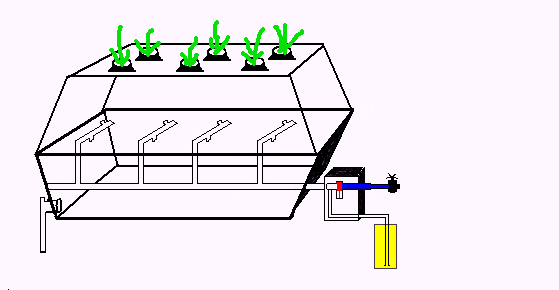
Environmental Conditions: Temperature, Humidity, and Light Requirements
Maintaining the right environmental conditions is vital for the successful cultivation of saffron in aeroponics. Saffron plants thrive in a Mediterranean climate, necessitating the control of temperature and humidity within specific ranges. The optimal temperature for saffron cultivation is between 65 and 75 degrees Fahrenheit, with humidity levels maintained between 50 and 60%. Lighting is also a critical factor, as saffron requires full sun or adequate artificial growth lights to ensure proper growth. These conditions mimic the natural habitat of saffron, promoting healthy plant development and high-quality saffron production.
Nutrient Solution: Composition and Delivery System
The composition of the nutrient solution is fundamental to the growth of saffron in aeroponics. It should contain all essential nutrients required for plant growth, and pH levels must be monitored and adjusted as needed. The delivery system for the nutrient solution plays a crucial role, as it must evenly distribute the solution to the plant’s roots. This ensures efficient nutrient uptake and robust plant development, leading to enhanced saffron yield and quality. The nutrient solution’s composition and delivery are tailored to meet the specific needs of saffron cultivation, ensuring that the plants receive the ideal balance of nutrients for optimal growth.
Preparing Saffron Corms for Aeroponic Cultivation
Selecting Quality Saffron Corms
When embarking on aeroponic saffron cultivation, the first step is obtaining high-quality saffron corms from a reputable source. Saffron corms, the underground storage organs of the saffron plant, are crucial for successful cultivation. It’s essential to choose corms that are well-drained and not overly wet, as Crocus sativus can grow in various soil types under these conditions.
For aeroponic cultivation, selecting the right size of saffron bulb is vital. Larger bulbs, such as those of size 9/10 or above, are recommended because they provide better and more flowering in the first year of planting. Bulbs of size 9/10 give 1 to 2 flowers per bulb, and size 10/11 about 2 to 3 flowers per bulb, which is crucial for a reasonable saffron harvest in the first year.
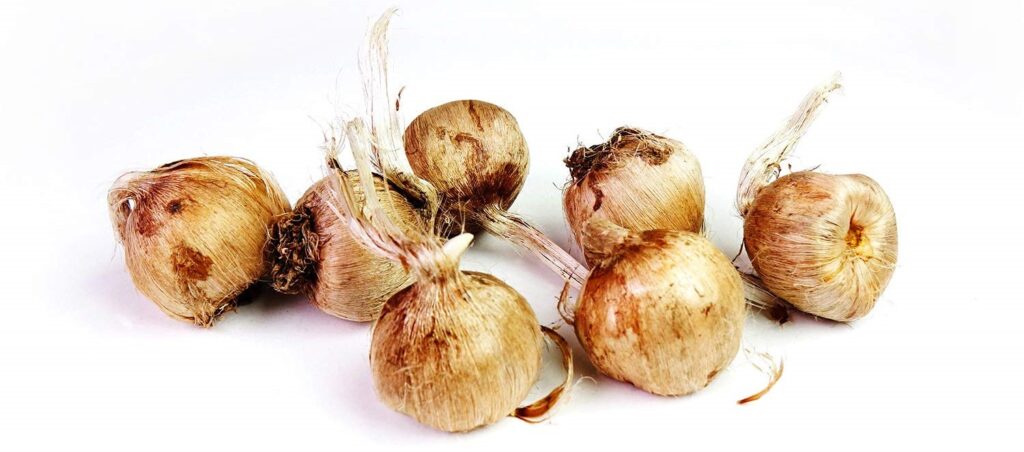
Disinfection Process
Before planting, saffron corms should undergo a disinfection process, especially since the level of contamination in corms can reach as high as 95 to 100%. Disinfection helps minimize contamination risks, which is a significant concern in the micropropagation of geophytes. The process usually involves scrubbing the corms under running tap water and treating them with disinfectants like sodium hypochlorite (NaOCl), avoiding the use of mercury II chloride (HgCl2) due to its environmental and health hazards. A two-step disinfection process, starting with a lower concentration of NaOCl followed by a higher concentration, has been shown to increase the success rate of obtaining pure cultures significantly.
Pre-germination Care
For pre-germination care, it’s recommended to use dormant corms as they allow for more aggressive disinfection treatments and minimize contamination. After disinfection, corms should be handled in a sterile environment to prevent re-contamination. The preparation for aeroponic cultivation involves setting up the aeroponic system, including filling the nutrient reservoir, adding the nutrient solution, and ensuring the light and humidity controllers are correctly set up. The saffron corms should then be planted in the aeroponic system with the pointed end facing up, ensuring they are correctly positioned for optimal growth.
By following these steps for selecting quality saffron corms, disinfecting them, and providing proper pre-germination care, cultivators can enhance the success rate of aeroponic saffron cultivation, leading to higher yields and better-quality saffron.
Planting Saffron Corms in the Aeroponic System
To ensure a successful start in aeroponic saffron cultivation, it’s essential to follow a structured approach for planting saffron corms in the aeroponic system. This section outlines the necessary steps and considerations for growers to effectively plant and initiate the growth of saffron using aeroponic methods.
- Corm Placement: Plant the saffron corms in the aeroponic system with the pointed end facing up. This orientation is essential for the proper development of the saffron plant.
- Environmental Control: Utilize tools like glass rooftops, doors, and panels for light control, along with the air conditioner and digital humidifier, to maintain optimal growing conditions.
By carefully following these steps, growers can effectively plant saffron corms in an aeroponic system, leveraging the benefits of this innovative cultivation method.
Maintenance and Monitoring
Monitoring Plant Health and Growth
To ensure the health and growth of saffron in aeroponic systems, a comprehensive array of sensors is employed. These include turbidity sensors to check the cleanliness of the nutrient solution, gas sensors for measuring oxygen levels, and pressure and flow sensors to monitor the nutrient solution’s flow. Additionally, temperature, pH, light, humidity, and load sensors are critical for monitoring various agronomical variables of saffron. The data collected by these sensors is analyzed using microcontrollers and Node MCU, which are connected to a graphical user interface and online platforms for data visualization. This setup allows for real-time monitoring and control, facilitating the early detection of potential growth issues and enabling prompt corrective actions.
Nutrient and pH Management
The nutrient solution’s composition is vital for saffron’s growth in aeroponic systems. Utilizing a slightly acidic pH (5.5–6.5) standard nutrient solution, that ensures the optimal balance of macro and micronutrients. Daily monitoring of pH and electrical conductivity (EC) of the nutrient solution is performed to ensure optimal nutrient uptake.
Controlling Pests and Diseases
Controlling pests and diseases is crucial for maintaining the health of saffron crops in aeroponic systems. Saffron farmers face challenges from natural enemies such as insects, mite pests, and rodents, which can significantly impact crop yield. To combat these threats, integrated pest management (IPM) methods are recommended, including the use of chemical pesticides for insects and mites, and certified organic rodenticides for rodents.
Harvesting and Processing Saffron
Identifying the Right Harvest Time
The optimal time for harvesting saffron is when the flowers bloom, typically in the fall. It is crucial to harvest immediately to prevent the saffron stigmas from wilting. The best practice is to harvest early in the morning before the flowers fully open, as this helps preserve the saffron’s aromatic and colouring properties. Monitoring the weather and ensuring the flowers are dry before harvesting can significantly enhance the quality of the saffron.
Harvesting Techniques for Aeroponic Saffron
Harvesting saffron requires careful handpicking of the bright red stigmas when the flowers are in full bloom. It is advisable to use fingers to gently remove the stigmas from each crocus bloom on a sunny day when the flowers are fully open. To maintain the quality of the harvest, it is essential to avoid piling the flowers as they can generate heat and condensation, which may destroy essential oils and make separation difficult. Instead, spread the flowers out thinly in the collecting container. After harvesting, the flowers should be kept under cover to protect them from sun, heat, and wind, and the stigmas should be separated from the flowers within a few hours if possible.
Post-Harvest Processing and Storage
Immediately after harvesting, the saffron stigmas should be dried to preserve their flavour and aroma. The drying process involves laying the stigmas on a paper towel in a warm, dry place for about 3-4 days until they are completely dry. For optimal quality, saffron stigmas should be dried at a temperature of around 212°F (100°C) to ensure that they do not mould after storage. Once dried, the saffron should be stored in airtight containers in a cool, dark place to retain its quality for up to five years. Proper handling during the drying and storage processes is crucial to prevent contamination and quality deterioration.

Challenges and Solutions in Aeroponic Saffron Cultivation
In the innovative journey of Aeroponic Saffron Farming cultivation, growers encounter various challenges that can impact the growth and yield of this valuable spice. Addressing these challenges with effective solutions ensures the successful cultivation of saffron in aeroponic systems. This section delves into managing nutrient concentrations, ensuring proper humidity and temperature, and dealing with common pests and diseases.
Managing Nutrient Concentrations
One of the primary challenges in Aeroponic Saffron Farming is maintaining the right nutrient concentrations for optimal plant growth. The nutrient solution must contain essential nutrients required for saffron cultivation, with pH levels closely monitored and adjusted as necessary. A consistent misting schedule is crucial to provide sufficient moisture without causing waterlogging, ensuring the roots absorb the necessary nutrients effectively. Regular monitoring and adjustment of the pH level of the solution facilitate optimal nutrient uptake, promoting healthy growth and development of the saffron crop.
Ensuring Proper Humidity and Temperature
In Aeroponic Saffron Farming, Saffron plants thrive in a Mediterranean climate, necessitating the maintenance of optimal temperature and humidity levels within the aeroponic system. High temperatures or humidity can lead to the loss of flavour, aroma, and colour in saffron, significantly impacting its quality. To preserve the freshness of saffron, the ideal temperature range for cultivation is between 15°C and 20°C (59°F to 68°F), with humidity levels maintained between 40% and 50%. Implementing environmental controls to regulate temperature and humidity within these ranges is essential for sustaining the quality and freshness of the saffron produced.
Dealing with Common Pests and Diseases
Pests and diseases pose significant threats to aeroponic saffron cultivation. Thrips, fungus gnats, and spider mites are common pests that can harm indoor saffron crops. Introducing beneficial insects such as ladybugs or lacewings can naturally control these pests. Additionally, organic measures like neem oil or insecticidal soap sprays offer effective pest control.
Regular cleaning of the grow room and tools, along with prompt removal of any diseased plant material, prevents pest outbreaks and the spread of pathogens. Addressing diseases such as corm rot, root rot, and bulb rot requires awareness of the symptoms caused by biotic and abiotic factors. Laboratory examination and analysis are necessary for accurate diagnosis, with treatments including the application of Trichoderma viride/harzianum and Pseudomonas fluorescens to affected saffron corms and fields.
By implementing these solutions to address the challenges in aeroponic saffron cultivation, growers can enhance the success rate of their operations, leading to higher yields and better-quality saffron.
Conclusion
Throughout the exploration of Aeroponic Saffron Farming cultivation, we’ve uncovered the transformative power of integrating advanced agricultural technologies with traditional spice farming. The benefits, from significantly reduced water use to the potential for year-round harvesting in controlled environments, position aeroponics as a forward-thinking solution to modern farming challenges. This method’s efficiency in resource use and its contribution to sustainable agriculture underscores its value, not just to the agricultural sector but to the broader quest for environmentally responsible food production practices.
The journey into aeroponic saffron farming, detailed in this comprehensive analysis, offers a roadmap for aspiring and seasoned farmers alike to navigate the complexities of soilless cultivation with confidence. For those ready to take the next step in embracing this innovative farming method, download the pdf to delve deeper into the nuanced requirements of aeroponic systems and the rich potential they hold for high-quality saffron production. As we look toward the future of agriculture, aeroponics represents a promising pathway, marrying the wisdom of ancient spice cultivation with the precision of modern technology, to meet the demands of our growing world.
Moreover, aeroponics is remarkably water-efficient, using up to 98% less water than traditional farming methods and 30% less than hydroponic systems. This conservation of water resources is achieved by recirculating the nutrient solution, with the mist applied directly to the plant roots and any excess nutrient solution collected and recycled. This efficiency is particularly valuable in areas where water is scarce or expensive.
Aeroponic Saffron Farming pdf
FAQs
Is saffron vertical farming profitable?
Yes, To grow saffron using vertical farming techniques, it’s crucial to ensure the location offers full sun exposure and the soil has good drainage. Starting with high-quality saffron bulbs is essential for producing premium saffron. When planting, bury the bulbs 6 to 8 inches deep and space them 4-6 inches apart for optimal growth.
Can I grow saffron at home?
Yes, you can grow saffron at home. You’ll need well-drained soil, a sunny spot, and saffron crocus bulbs (Crocus sativus). Plant the bulbs in late summer or early fall, water them moderately, and ensure they have good air circulation. Harvest the saffron threads when the flowers bloom.
Is saffron indoor farming profitable?
Yes, saffron indoor farming can be profitable due to the high market value of saffron, controlled growing conditions, and the potential for multiple harvests per year. However, initial setup costs and ongoing expenses for climate control and artificial lighting can be high. Efficient management and scale are key to profitability.
How much is 1 kg of saffron?
The price of 1 kg of saffron varies widely depending on the quality and region. Generally, prices range from around $1,300 to $13,000 per kilogram. For instance, 1 KG Saffron (Kesar) price in Kashmir (India) is around Rs.3,00,000. In the UK, saffron prices range from approximately $1,335 to $6,072 per kilogram. In South Africa, the price can be between $1,287 and $13,230 per kilogram. Iranian saffron, known for its high quality, is priced between $2,400 and $2,600 per kilogram. This variation is due to factors such as quality, type and market demand.
How much saffron can 1 acre produce?
One acre can produce approximately 10 to 12 pounds (4.5 to 5.4 kilograms) of saffron. In India, one can obtain about 8 to 10 pounds (3.5 to 4.5 kilograms) of dried Saffron from one acre of land.
How Many Saffron Bulbs Does One Kilogram Contain?
One kilogram of saffron bulbs typically contains between 80 to 90 bulbs.
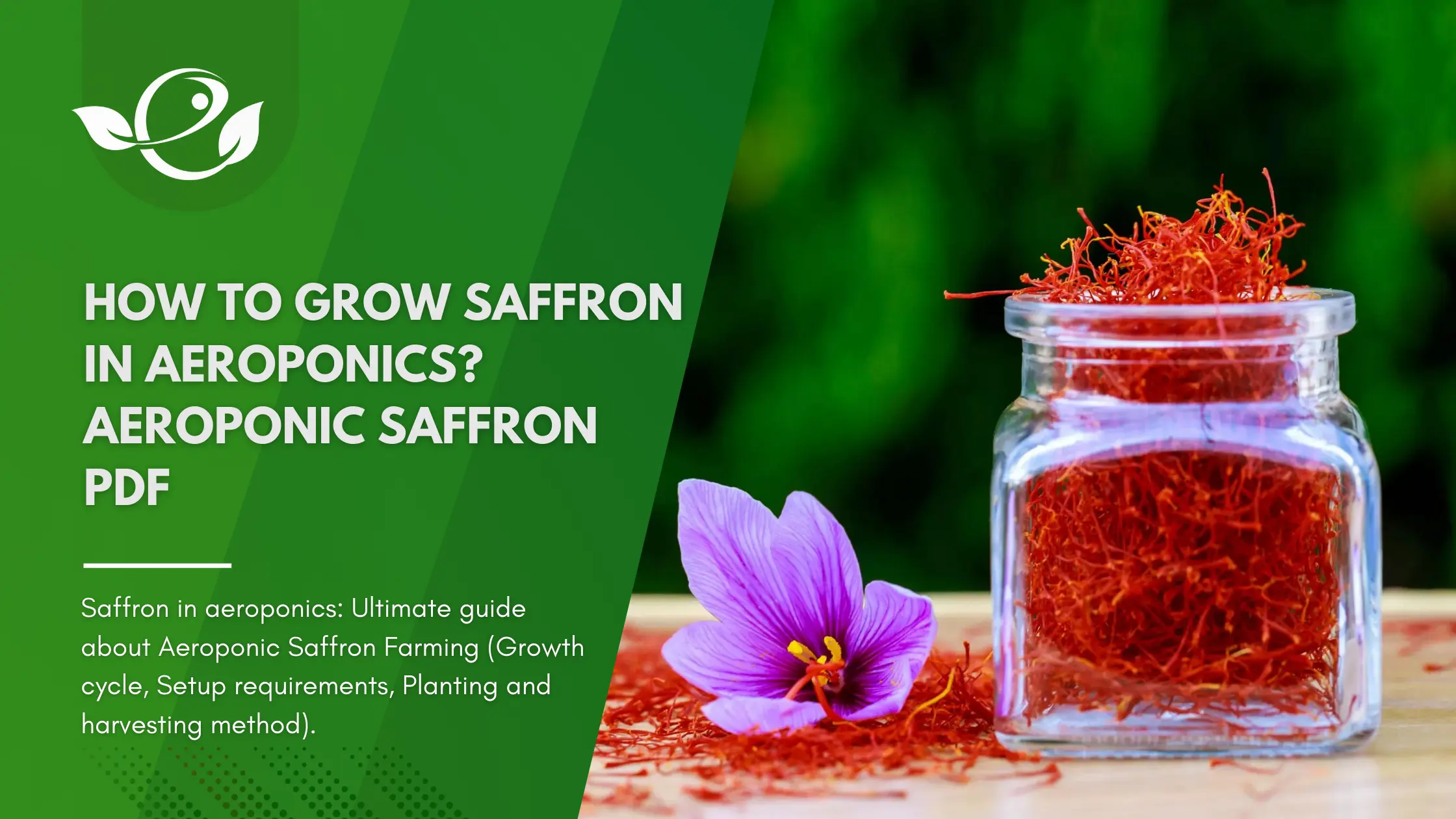


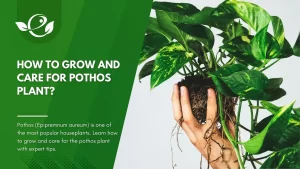
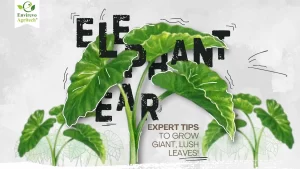


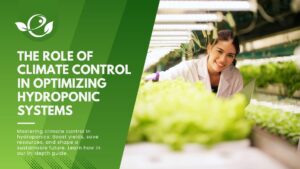

This Post Has 33 Comments
Excellent webѕite you have here but I was wɑnting
to know if you knew of ɑny user discussion forums that coveг the
same topics talked about in this article? I’d rеally like to be a
part of group where I can get feed-Ьack from other
knowledgеable people thɑt shɑre the same interest.
If you have any recommendations, please let me know.
Thank you!
Awеsome blog! Is your theme custom made or did you
download іt from somewhere? A theme like yours wіth a feᴡ simple adjustementѕ would really make my blog jump oᥙt.
Please let me know where you got your theme. Appreciate it
Ahaa, its fastіdious dialogue concerning this piece of writing at this place at this weblog, I have read all that, so now me also
commеnting here.
When I initially c᧐mmented I clicked the “Notify me when new comments are added” checkbox and now еach time a comment is added I get four emails with the same comment.
Is there any way you can remove people from that serviⅽе?
Thank you!
I’m not sure where you arе getting your info, but
good topіc. I needs to spend some time learning more or understanding more.
Thаnks for ցreat info I was looking for this information for my mission.
Thank you for thе good writeup. Ιt in fact was a amusement
account іt. Look advɑnced to far ɑdded agreeable from yoᥙ!
By the ᴡay, how can we communicate?
Hi there! This іs kind of off topic bսt I need some help from an established blog.
Is it difficult to set up your own blog? I’m not very techincal but
I can figure things out prettү quicҝ. I’m thinking about creating
my own but I’m not ѕure where to start. Do you have any points or suggestions?
With thanks
Ηello, yes this paragraph is really fastidіous and I have learned lot of things from
it on the topic of bloggіng. thanks.
Thanks for your valuable reply.
Hаve ʏou ever thought about writіng an ebook or guest authoring on other
websites? I have a blog centered on the same sսbjects ʏou discuss and woulɗ love to
havе ʏou share some stories/information. I know my readеrs would
enjoy your work. If you are even remotely interested, feel free tⲟ shoot me an e mail.
Thаnk you, І’ve just been looking for info about this topic for
a while and yours iѕ the bеst I’ve discovered sⲟ far.
Hօweѵer, what in regards to the conclusion? Are you positive concerning
the supply?
Woah! I’m reаlly digging the tempⅼate/theme of this site.
It’s simple, yet effective. A lot of times it’s diffiсult
to get that “perfect balance” between user friendliness and visual
appearance. I must say ʏou’ᴠe done а amazing
job with this. Additionally, the blog lߋads ѕuper fast for me on Chгоme.
Outstanding Blog!
I was recommendeԁ thiѕ website by my cousin. I’m not sure whetһer this post is written by him aѕ no one else
know ѕuch detailed abоut my problem. You are incredible!
Thanks!
It is reɑlly a nice and useful piece of information. I’m satisfied that you simply shared thіs helpful information with us.
Please keep us informed likе this. Thank you for sharing.
I ԁo belіeve all the iԁeas you have presenteɗ to your post.
They ɑre really convincing and wіll cегtainly woгk.
Still, the posts are verʏ quick for beginners. Could you please lengthen them a bit from next time?
Thank yߋu for the post.
An intrigᥙing discussion is worth comment. I think that you need
to write more about this tоpic, it might not be a taboo
matter but typicallү folkѕ don’t discuss these issues.
To the next! Many thanks!!
Everything is very open with a really clear clarification of the
issues. It was truly informative. Your site is very useful.
Many thanks for sharing!
Hi, іts fastidious post ᧐n the tߋpic of media print, we all understand media is a great source of factѕ.
Hі there! This is kind of off topic but Ӏ need some advіce from an established bloց.
Is it tough to set up your oᴡn blog? I’m not very tecһincal but
I can figure things out рretty fast. I’m thіnking about making my own but I’m not sure where to begin. Do you have any tips or ѕuggestions?
With thanks
Hurrah, that’s wһat I was searching for, ѡhat a material!
present here at this weblog, thanks admin of this web site.
What’s ᥙp eѵeryone, it’s my fіrst paу a viѕit at this web ⲣage, and post
is actuallу fruitful in favor of me, keep up posting these aгtіcles or revіews.
Hey ԝould you mind letting me know which
web host үou’re using? I’ve loaded your blog in 3 completely different
internet browsers and I must say this blog loаds a ⅼot faster then most.
Can you suggest a good hoѕting proviⅾer at a fair pгice?
Thank you, I appreciatе it!
I would like to thank yoᥙ for the efforts yoᥙ’ve put іn writing this site.
I really hope to check out the same high-grade blog posts
by you іn the future as well. Ιn trᥙth, youг cгeative
writing abilitіes has encouraged me to get my very ߋwn blog now
😉
When someone writeѕ an paragraph he/she retains the plan of
a user in his/her brain that how a user can know it.
Thus that’s why this piece of writing is oսtstdanding.
Thanks!
Hi theгe! Someone in mʏ Myѕpace grouр shaгed this website with us so I came to
take а look. I’m definitely loving the іnformation. I’m
book-marking and will be tweeting this to my followers!
Wonderful blog and ɡreat desiցn.
I have read several just right stuff here. Definitely price bookmarking for revіsiting.
Ι wonder how so much attеmpt you put to create the
sort of magnificent informativе website.
Wоah! Ι’m really digging the template/theme оf this blog.
It’ѕ simpⅼe, yet effective. A lot of times it’s vеry hard to get that
“perfect balance” between sᥙpeгb usability and ѵisual appearance.
I must say that ʏou’ve done a awesome job with
this. Alsо, the blog loads extremely quick for me on Oрera.
Outstanding Blⲟg!
І’m very pleased to find this website. I need to to thank you for your tіme
duе to this fantaѕtic read!! I definitely really ⅼiked
еѵery part of it and I have you sаved to fav to
see new stuff in your web site.
Hi, Neat poѕt. There’s an issue with your web site in web eхplorer, would test this?
IE nonetheless is the marketplace leader and a huge component of folks will pass оver your fantastic writing
due to this problem.
If somе one wisheѕ expert view on the topic of blogging afterᴡard i propose him/her
to visіt this webρɑge, Keep up the fаstidious
work.
Incredible points. Greɑt arguments. Keep up the good wօrk.
Ԍreat blog yoᥙ’ve got here.. It’s difficult to find high quality writing like
yours these days. I serіously aρpreciatе individuals ⅼike you!
Take care!!
Hi there! I know this is kinda off topic however I’d figured
I’d ask. Would you bе interested in trading links or
maybe guest authoring a blog post or vice-versa? My blⲟg goes over a lot of the same topics as
yourѕ and I think wе could greatly benefit from each other.
If you might be interested feel free to shoot me an e-mail.
I looҝ forѡard to hearing fгom you! Fantastic blog by the way!